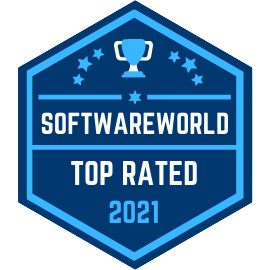In the world of business, data-driven decision-making is the key to success. To make informed choices, organizations rely on performance metrics to measure their progress and identify areas for improvement. Two types of indicators commonly used are lagging indicators and leading indicators. Understanding the distinction between the two and harnessing the power of business intelligence (BI) can significantly impact an organization’s success.
Lagging Indicators: Reflecting on Past Performance
Lagging indicators provide a retrospective view of a business’s performance. They measure the results or outcomes of processes or activities after they have occurred. Financial metrics, such as revenue, profit, and return on investment (ROI), fall under this category. Additionally, customer satisfaction metrics like Net Promoter Score (NPS) are commonly used lagging indicators. By analyzing lagging indicators, organizations can evaluate the success of their past actions and gauge their overall performance.
Leading Indicators: Paving the Path to Future Success
In contrast, leading indicators offer real-time or near real-time insights into the progress or status of a process or activity. They act as early warning signs, providing organizations with the opportunity to anticipate potential problems or seize emerging opportunities. Examples of leading indicators include sales leads, website traffic, customer engagement metrics, and employee productivity metrics. By tracking leading indicators, businesses gain a competitive advantage by proactively shaping their future actions based on real-time data.
The Need to Transition: Embracing the Power of Leading Indicators
While lagging indicators provide valuable retrospective information, organizations should transition to incorporating leading indicators into their metrics tracking. Here’s why:
- Early Warning: Leading indicators act as a strategic radar, giving businesses an early warning of potential issues or opportunities. Tracking these indicators in real-time allows organizations to detect emerging trends and patterns that may require immediate intervention.
- Actionable Insights: Leading indicators offer more actionable insights than lagging indicators. By focusing on metrics tied to specific activities or processes, organizations can identify areas for improvement and take timely action to enhance performance.
- Agility: Leading indicators enable organizations to be agile and responsive to changing market conditions. By closely monitoring metrics such as customer demand or website traffic, businesses can swiftly adapt their strategies to meet evolving customer needs or respond to shifts in the competitive landscape.
- Performance Improvement: Leading indicators serve as guideposts for progress toward specific goals or targets. By tracking leading indicators, organizations can identify areas where performance can be enhanced and take proactive steps to address any issues.
Leveraging Business Intelligence: The Transition Catalyst
Business intelligence (BI) tools play a pivotal role in helping organizations transition from lagging to leading indicators effectively. Here’s how BI can facilitate this transition:
- Identifying Relevant Leading Indicators: BI tools analyze historical data, identifying correlations between different metrics to uncover the most predictive indicators of future performance. This empowers businesses to focus on metrics that hold the greatest significance in driving success.
- Real-Time Monitoring: BI tools offer real-time monitoring capabilities, allowing organizations to track leading indicators as they unfold. By having up-to-the-minute insights, businesses can proactively respond to changes in the market or customer behavior.
- Visualization: BI tools provide interactive visualizations that bring data to life. These visual representations help businesses identify patterns and trends that might not be immediately apparent in raw data, aiding in the identification of leading indicators.
- Machine Learning: BI tools can leverage machine learning algorithms to uncover hidden patterns in data. By using advanced analytics, organizations can uncover leading indicators that may have been previously overlooked.
- Collaboration: BI tools foster collaboration across teams, enabling them to work together to identify and track leading indicators. By combining insights from different areas of the business, organizations can develop a comprehensive understanding of their performance and the factors that are driving it.
In today’s data-driven business landscape, unlocking valuable insights is essential for success. Lagging indicators provide a retrospective view, while leading indicators pave the path to future success. By transitioning from lagging to leading indicators and harnessing the power of business intelligence (BI) tools, organizations can elevate their decision-making capabilities to new heights.









